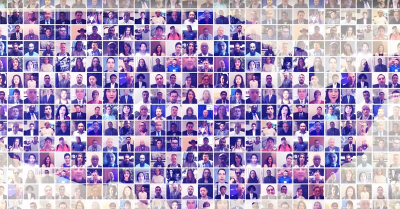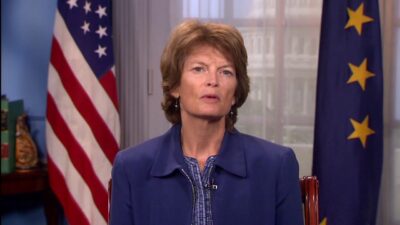Global Competitiveness
The United States has long been the destination for the world’s most talented immigrants. Despite the last 50 years of technological advancement, American immigration policy has remained virtually unchanged, putting in danger America's global competitiveness. Yesterday's immigration policy no longer meets today’s economic needs. Only about 14 percent of all U.S. green cards are given for economic reasons, compared to more than 60 percent in Canada and Australia. With no dedicated visa for entrepreneurs and numerous barriers to residency in place for international students to stay after graduation, America's outdated immigration policy could allow other countries to out-compete us by attracting and keeping the best and brightest there and not here.

The Kangol Kid: Recycled Stereotypes Ignore Decades of Haitian Contributions
Shaun Fequiere was 7 years old when he first experienced the sting of discrimination. Classmates at his elementary school in Brooklyn had learned that his parents were from Haiti, where the main language is a French-based creole, and had started calling him “French fry” and “French poodle.” The teasing escalated,… Read More

In America Since Age 2, Texan Fears Deportation to El Salvador if TPS Ends
In 1997, the Iraheta family fled their native El Salvador, a country racked by political unrest following a 12-year civil war, for safety and opportunity in the United States. Claudia Iraheta was 2 years old. Her family settled in Farmers Branch, Texas, and has been able… Read More

Highlights from the iMarch
Watch the recap from December’s iMarch kickoff below. Learn more and get involved at iMarch.us. Read More

Watch: Tech Entrepreneur Tom Chavez Joins the iMarch
https://youtu.be/2HjuyGUWF2o

Company Founder, a Chinese Immigrant, Brings Factory Jobs from Asia to Maryland
In 2011, Chesapeake Bay Candle hit a unique milestone. That was the year the company, which manufactures high-end decorative candles, moved a significant portion of its production operations out of Vietnam and began manufacturing its products in a factory near Maryland’s Eastern Shore. Photo: Sherri Cunningham / CC… Read More

WHO TV: The Insiders: November 26th Edition, Immigration, Border Security, and Unemployment
Much like health care reform, immigration reform has not happened yet for the Republicans who currently control Congress and the White House. Various groups are pushing various ideas on the best ways to change how and when we allow people to move into our country and how and when we… Read More

Dreamers Play Vital Role in Texas Economy
Sergio Ramos was born in Texas and has lived in southeast Texas for more than 60 years. The only sign he is an immigrant is his lingering Spanish accent. As soon as he started studying English in the border town of Harlingen at age 13 — his father went back… Read More

Taiwanese Scholar Adds Value to Pennsylvania Campus
Students at Delaware Valley University, in Doylestown, Pennsylvania, are often surprised to learn that their European history professor is a Taiwanese immigrant. But for Dr. Shih-chieh “Jay” Su, studying and teaching in the United States has made perfect sense. “Academic freedom in the U.S. higher education system is very protected for teachers,”… Read More
Impending Labor Challenges
The United States is facing demographic challenges that endanger its preeminent economic position in the world. An aging workforce threatens the vitality of the labor force. At the same time, the supply of U.S.-trained engineers is lagging behind nearly all other industrialized economies. At a time when tech-heavy and innovation driven industries are driving economic growth, the United States faces the prospect of being left behind.
Table 1: Share of Population Age 65+, 1996, 2006, 2016 and projected 2030
Table 2: Share of Undergrads Studying Engineering
Prioritizing Economic Needs
Many countries have identified the link between immigration and economic growth. For many, such moves are a matter of necessity–the domestic labor force is not sufficient for an expanding economy, and aging populations and declining fertility rates are creating labor shortages. Despite facing some of the same challenges, U.S. immigration policy has not changed to reflect our economy’s evolving needs.
Table 3: Percentage of All Permanent Residency Visas Given for Economic Reasons*
Need for a Start-Up Visa
Countries around the world, from France, to Chile, to Singapore have created visas aimed at attracting promising entrepreneurs and job creators. Despite concerns about meager job creation and business growth, however, the United States has not taken a similar step, endangering our position in the global race for talent. This situation was made worse in 2017 when the administration took the first steps to kill the International Entrepreneur Rule, a measure that would have allowed entrepreneurs with outside funding to remain in the country for 2.5 years to establish their businesses.
Make a contribution
Make a direct impact on the lives of immigrants.

